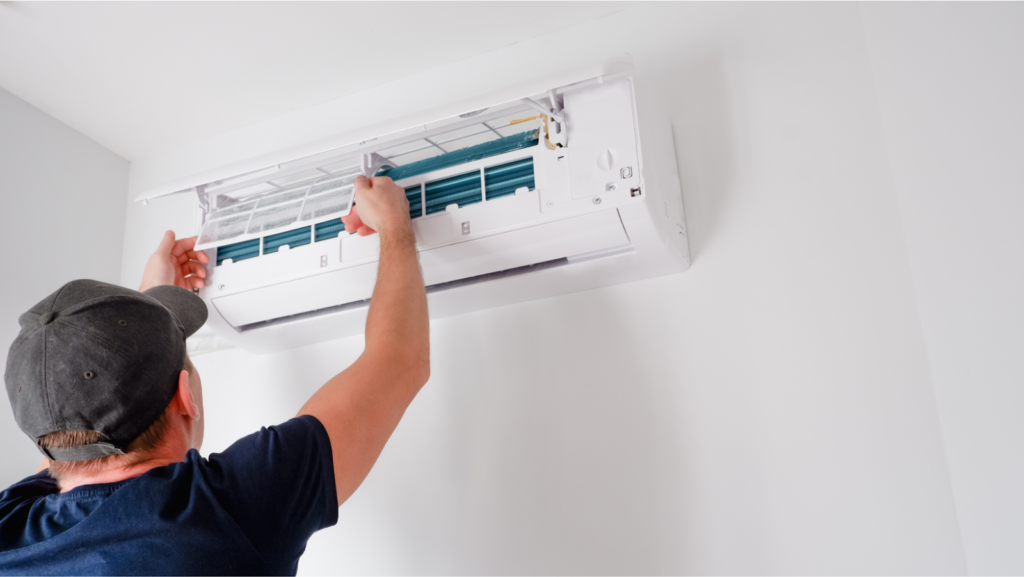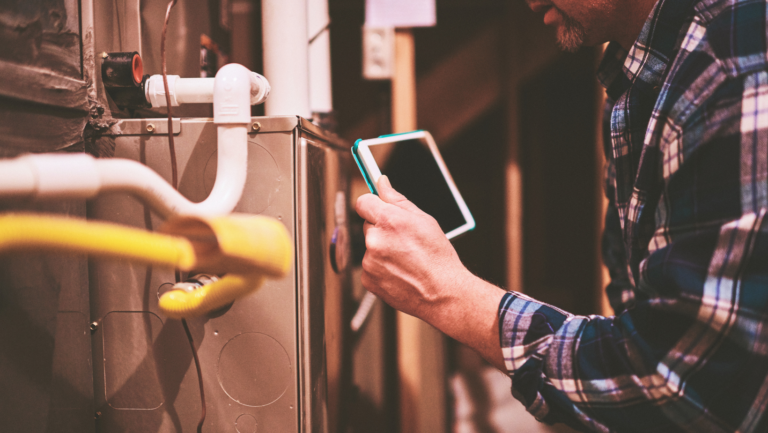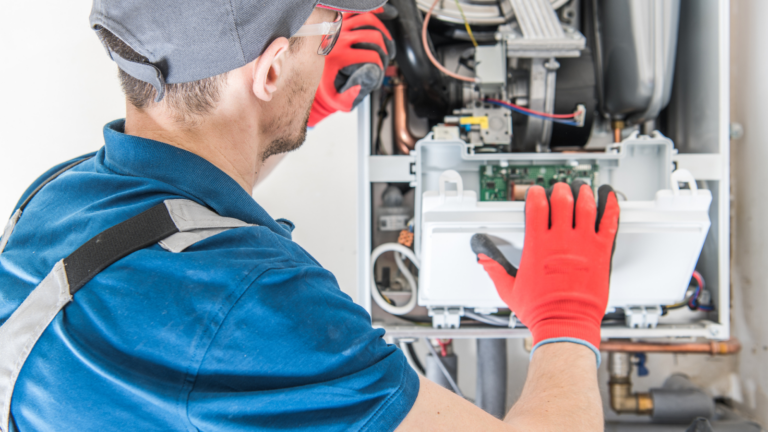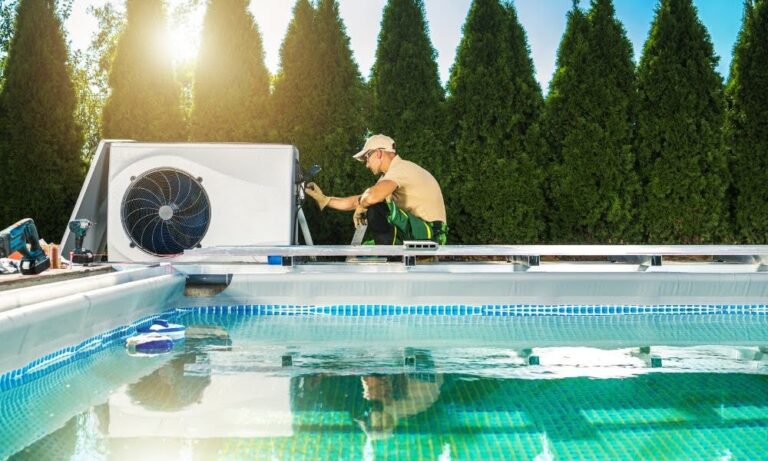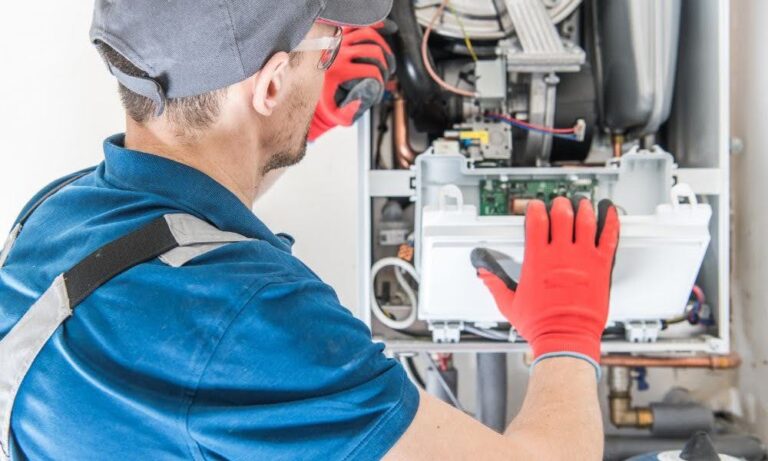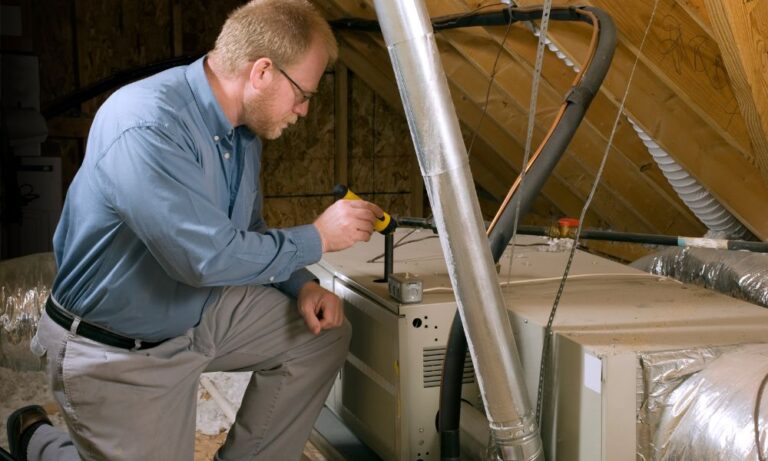Mastering Furnace Installation: A Comprehensive Guide to Timing and Techniques
Installing a furnace is a critical aspect of ensuring comfort and efficiency in any home. From understanding the basics to mastering the intricate techniques, proper installation is important
Furnaces serve as the heart of a home’s heating system, providing warmth during cold months. They come in various types, including gas, electric, and oil, each with its unique features and requirements.
A poorly installed furnace can pose safety risks like gas leaks or carbon monoxide poisoning. Improper installation can lead to inefficiencies, resulting in higher energy bills and premature wear and tear. Proper installation ensures safety, efficiency, and reliability for homeowners, offering peace of mind.
Pre-Installation Preparation
Furnace pre-installation preparation ensures optimal efficiency and safety by carefully planning and preparing the space and materials needed before installing the heating system.
Assessing Heating Needs
Consider factors such as the size of your living space, insulation levels, and local climate, as well as the gas lines required for the furnace. This assessment will help determine the appropriate size and type of furnace required to efficiently heat your home.
Selecting the Right Furnace
With various furnace options available, selecting the right one requires careful consideration. Factors to consider include fuel type (gas, electric, oil), efficiency ratings, size, and compatibility with existing ductwork or heating system components. Choosing an energy-efficient furnace not only helps reduce utility bills but also minimizes environmental impact by lowering energy consumption.
Gathering Necessary Tools and Materials
Before beginning the installation process, ensure you have all the necessary tools and materials on hand. This includes basic hand tools such as wrenches and screwdrivers, as well as specific materials like ductwork, fittings, and insulation.
Understanding Installation Time Factors
Efficiently managing the furnace installation process within the specified time frame requires careful consideration of various factors that can affect the duration of the project, including the ability to evenly distribute heat throughout the home. It helps homeowners schedule conveniently, budget accurately for labor costs, and coordinate tasks efficiently.
Complexity of the System
The complexity of the furnace system plays a significant role in determining installation time. Systems with additional features like zoning or variable-speed blowers may require more time for installation compared to simpler systems.
Size of the Furnace
Larger furnaces may require more time and effort to position and install properly, especially if modifications to the ductwork or ventilation system are necessary.
Accessibility of Installation Area
The accessibility of the installation area can greatly affect installation time. A cramped or hard-to-reach space may require additional time and effort to maneuver the furnace into place and make necessary connections.
Estimating Installation Time
Estimating installation time is important for homeowners to plan their schedules effectively and budget accurately. It also helps coordinate tasks and manage expectations, ensuring a smoother and less stressful installation process overall.
Average Time for Different Types of Furnaces
The time needed to install a furnace can vary based on its type. On average, a standard gas furnace installation typically takes between 4 to 8 hours, while an electric furnace may take slightly less time. Factors such as the complexity of the system, size of the furnace, and accessibility of the installation area can also influence the installation time for electric furnaces.
Factors That Can Speed Up Installation
These include having a well-prepared installation area with ample space and clear access for the installers. If the home’s existing ductwork and electrical connections are in good condition and compatible with the new furnace, it can significantly speed up the installation process.
Factors That Can Extend Installation Time
Complexities such as extensive ductwork modifications, retrofitting for a new furnace type, or addressing unforeseen issues with existing infrastructure can all contribute to longer installation times.
Steps Involved in Furnace Installation
Site preparation is important, ensuring the installation area is clean, accessible, and ready for the new furnace or removal of the old furnace. If replacing an old unit, the next step involves safely removing the existing furnace. Once cleared, the new furnace is positioned and securely mounted in place. Connecting the ductwork and venting follows, ensuring proper airflow and ventilation throughout the system. Each step is critical to the overall functionality and safety of the furnace, providing homeowners with reliable heating for their comfort and peace of mind.
Best Practices for Expedited Installation
Achieving an expedited furnace installation project relies on best practices to streamline the process and enhance efficiency. Through proper planning, installers can reduce installation time while upholding quality and safety standards.
Proper Planning and Organization
This includes scheduling tasks efficiently, ensuring all necessary tools and materials are readily available, and coordinating with all involved parties beforehand.
Utilizing Advanced Tools and Technology
From modern equipment for lifting and positioning heavy components to digital tools for precise measurements and diagnostics, leveraging technology can enhance efficiency and accuracy.
Collaborative Teamwork
Collaborative teamwork among installers and other involved parties is crucial for expediting installation. Clear communication, coordination of tasks, and a cohesive approach can help overcome challenges swiftly and ensure a smooth and efficient installation process.
Overcoming Common Installation Challenges
Furnace installation can present various challenges, but with the right approach, they can be effectively addressed.
Addressing Space Constraints
Space constraints can hinder installation, but creative solutions like compact combustion furnaces models or strategic placement can help maximize available space while ensuring proper installation and functionality.
Dealing with Unexpected Complications
Unexpected complications, such as damaged ductwork or electrical issues, may arise during installation. Prompt identification and professional resolution are essential to minimize delays and ensure a successful installation.
Ensuring Compliance with Regulations and Codes
Installers must stay informed about local regulations and ensure that all installation practices meet or exceed these standards, ensuring a safe and compliant heating system.
Quality Assurance and Testing
Ensuring the reliability and efficiency of a newly installed furnace involves comprehensive quality assurance and testing procedures.
Conducting Thorough Inspections
Thorough inspections are conducted to verify that all components are properly installed and functioning as intended. This includes checking connections, ductwork, and overall system integrity to identify any potential issues.
Performing System Tests
System tests are performed to assess the furnace’s performance and efficiency. This includes testing the heating cycles, airflow, and thermostat functionality to ensure optimal operation.
Addressing Any Issues
If any issues are identified during inspections or testing, prompt action is taken to address them. This may involve making necessary adjustments, repairs, or replacements to ensure the furnace meets quality and safety standards.
Post-Installation Considerations
After furnace installation, several important considerations ensure customer satisfaction and long-term functionality.
Providing Client Education
This includes explaining thermostat settings, filter replacement schedules, and warning signs of potential issues, empowering homeowners to effectively care for their furnace.
Offering Maintenance Tips
Offering maintenance tips such as regular filter replacement, scheduling professional inspections, and keeping the area around the furnace clear ensures optimal performance and longevity, particularly important for natural gas systems to maintain safety and efficiency.
Ensuring Customer Satisfaction
Following up with clients to address any concerns and ensure satisfaction is key. Providing excellent customer service and support reinforces trust and confidence in the installed furnace, fostering long-term relationships.
Summary of Key Points
Mastering furnace installation requires meticulous planning, skillful execution, and continuous support. From the initial assessment of heating requirements to the diligent inspection of the installation, each stage plays a vital role in guaranteeing comfort, energy efficiency, and safety within the home.
By proactively tackling common challenges, leveraging state-of-the-art tools, and strictly adhering to industry regulations, installers can not only streamline the installation process but also ensure the delivery of dependable heating solutions that meet the needs of homeowners effectively. This comprehensive approach not only enhances the overall performance of the furnace but also contributes to the long-term satisfaction and well-being of residents.
Discover Efficient Furnace Installation: Explore Beam Airflow Today!


